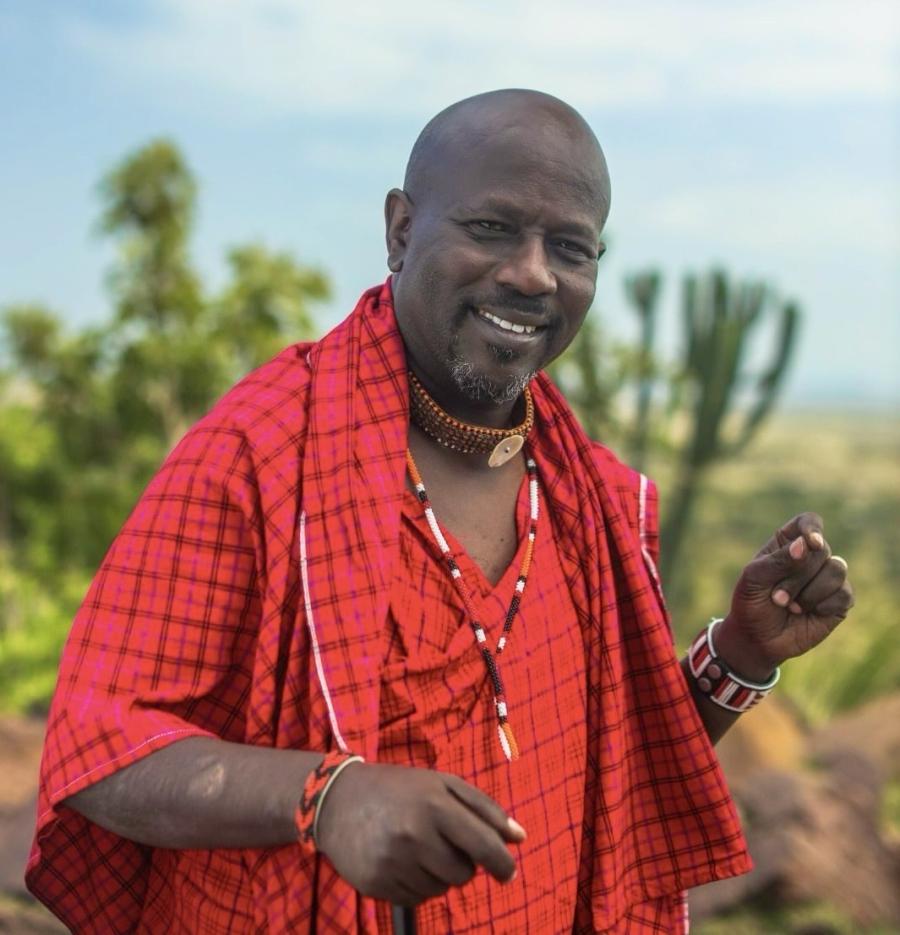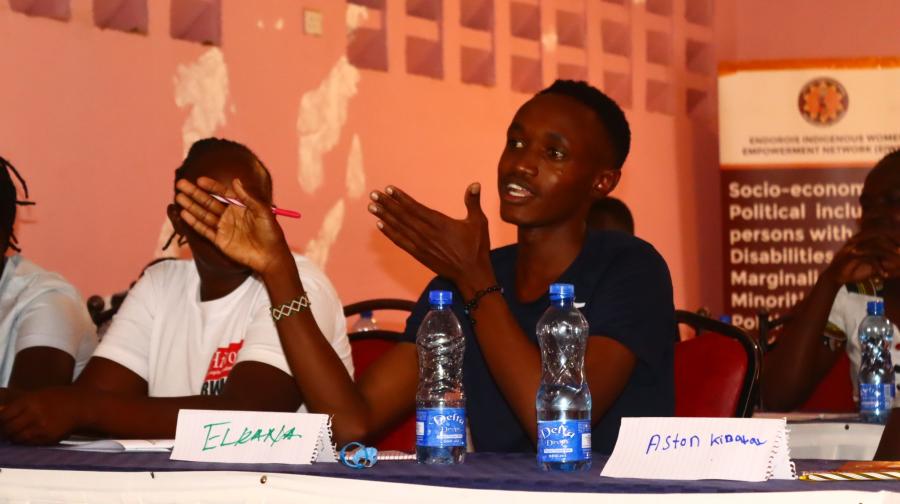
By Lucas Kasosi (Maasai, CS Intern)
In the southern Rift Valley of Kenya, beyond the steaming geothermal fields, fenced-off national parks, and margins of Lake Naivasha (Enaiposha), lies Narasha, a semi-arid landscape home to the Maasai people for generations. Today, this land is a battleground where Indigenous survival, spiritual identity, and environmental justice are being relentlessly contested.
At the heart of this ongoing struggle stands Jackson M. Shaa (Maasai), a professional teacher with deep Indigenous knowledge, a land defender, and the CEO of the Narasha Community Development Group (NCDG). For more than a decade, Shaa has been at the forefront, advocating against displacement, forced evictions, corruption, environmental degradation, and the slow violence of cultural erasure.
“Our land is our livelihood. It is us. And there is nothing we can allow to rob us of our land. Nothing will drive us to leave it," declares Shaa.
A Historical Pattern: The Theft of a Homeland
The displacement of Narasha’s Maasai community did not begin in 2013; it traces back to the 1970s, following the discovery of rich geothermal resources beneath their ancestral grazing lands. "The situation was horrible, terrible, since the discovery of the geothermal resource in the land around the 1970s," Shaa explains.
Since the early 1980s, the Kenya Electricity Generating Company (KenGen), then operating as Kenya Power and Lighting Company alongside the Kenyan government, has seized over 3,000 acres for projects like Olkaria I to V. National parks such as Hell’s Gate were carved out without community consultation, trapping Maasai communities between restricted conservation zones and expanding industrial projects. This pattern of dispossession reflects what scholars call the "green grabbing" phenomenon: the appropriation of land and resources under the guise of environmentalism or development.
“The projects came without following due process. They don't engage the community as required... Colonialism entrenched capitalism in our society, and now our leaders prioritize tenders and personal gain over our land and people.” This long arc of dispossession set the stage for the violent eruption of 2013.
2013: “They Came Without Warning”
In July 2013, Narasha witnessed one of the most brutal evictions in recent Kenyan history. Armed police, hired private security, and bulldozers descended at dawn, demolishing homes and scattering families without consultation or legal notice. “The Provincial Commissioner came and told us, as Shaa recalls, "the company bought the land and said 'You need to move out.’ There was no consultation. No notice. Just fire and machetes.” Over 2,300 Maasai residents were displaced. 247 homesteads were flattened. Livestock, the bedrock of Maasai livelihoods, were killed. Sacred cultural sites were desecrated.
Demolished homes in Kedong, cleared for the Standard Gauge Railway in 2018.
While the government promised mediation, true justice never materialized. Kikuyu farmers who illegally sold Maasai land were awarded Ksh. 500 million, while the Maasai community received only Ksh. 100 million, strictly for the destruction of property, not the loss of ancestral land.
“We were only compensated for damages—our houses, not our land. The issue of land was left pending. And that’s where we are now,” laments Shaa.
This mirrors broader global patterns, where Indigenous land claims are reduced to property disputes rather than rights violations, undermining Indigenous sovereignty.
Life in Limbo: “We Are Tenants on Our Own Land”
Today, members of Narasha relocated under the Olkaria I expansion project live precariously on leased land between Naivasha Town and Hell’s Gate. They lack formal title deeds and carry a Ksh. 3 million rent debt, and face lease expiry by 2049, setting the stage for further eviction.
“We live under the shadow of eviction again. Our grazing land is gone. The government has made us tenants on our own land,” says Shaa.
NCDG supports those displaced with essential food aid.
Meanwhile, new geothermal projects such as Olkaria VI and Olkaria VII, spearheaded by private actors like RentCo Ltd., forge ahead, falsely claiming that the targeted lands are unoccupied, a blatant tactic of Indigenous erasure.
“They claim there are no people living on the land. That we don’t exist. But we are here. This is our home,” declares Shaa.
Despite Kenya generating billions through geothermal energy, which is projected to contribute over 35% of Kenya’s electricity, according to KenGen, the Narasha Maasai have received none of the benefits, only pollution, poverty, and displacement.
Breathing Poison: The Hidden Health Crisis
The exploitation of Narasha’s geothermal fields has not only stolen land, but it has also poisoned life itself.
“Hydrogen sulfide is heavy—it doesn’t rise. It settles low and affects people directly. We’ve seen an increase in allergies, miscarriages, respiratory illness. Our animals drink from polluted streams and die. Children are born sick. People are getting cancer,” Shaa explains.
Scientific studies in 2014 by government chemists and the International Livestock Research Institute (ILRI) confirmed alarming concentrations of toxic heavy metals in soil and water near Narasha. Despite promises to build a health center, no functional facility exists; a 2010 dispensary project stands abandoned, a stark monument to broken promises.
“We live in fear. And yet, no health center has been completed. Funds were misused, and now we’re left with nothing,” Shaa states.
Educational opportunities, too, are limited, as secondary schools often lie beyond inaccessible parklands.
Cultural Violence: “These Are Not Just Rocks. They Are Us.”
To the Maasai, land is not just a resource. It is sacred. Sites like Fishers towers (Kaibartan) within Oljorowua (Oloirowua) Gorge, home to towering stone pillars with deep mythological significance, have been fenced off and commodified.
“Those towers have names. They tell stories. One of them represents a bride who turned to stone on her wedding day—a tale known even in Tanzania. These are not rocks. They are us,” Shaa explains.
The loss of access to ritual sites and burial grounds constitutes what anthropologists recognize as cultural genocide, the deliberate destruction of Indigenous cultural foundations.
“This is cultural violence. It’s a deliberate erasure of our identity,” Shaa declares.
Betrayal by Institutions: A Decade of Broken Promises
After the 2013 evictions, the World Bank Inspection Panel found that KenGen and donors violated Indigenous safeguards. However, no real reforms followed.
“The World Bank did a good job on the report—but nothing changed. They handed implementation to the government, and the government did nothing. Zero accountability,” comments Shaa.
Faced with government inaction and judicial corruption, the Narasha community shifted tactics, directly pressuring financiers like the European Investment Bank, JICA, and the World Bank.
This strategy bore fruit in 2018 when the European Investment Bank withdrew €150 million from a geothermal project due to human rights concerns, a powerful testament to the strength of Indigenous advocacy, Shaa said,
“That was a win. It shows that advocacy works. But we need more allies. We need the world to stand with us.”
Empowering women to defend community land against exploitative renewable energy projects
Building Power: “We Fight for Ourselves Now”
Under Shaa’s leadership, Narasha’s resistance has evolved from reactive protest to proactive empowerment. Through the NCDG, youth and women have been trained to defend land rights. The Olkaria Women for Land Rights group exemplifies this shift: women, once marginalized, now lead negotiations and physically defend their homes from incursions.
“We’re not fighting for the community—we’re helping the community fight for themselves....The women were once the most affected. Now, they are our strength,” Shaa emphasizes.
Despite threats of abduction and constant intimidation, the spirit of Narasha remains unbroken.
The Road Ahead: What Narasha Demands
Shaa’s demands are clear, lawful, and rooted in internationally recognized Indigenous rights:
- Formal Land Recognition:
Immediate implementation of the Community Land Act (2016) to secure collective title deeds.
- Benefit-Sharing Enforcement:
Enforce the Energy Act (2019) requiring 5% of royalties to go directly to local communities.
- Protective Policies:
Genuine definitions of “community benefit” must be established beyond token employment.
- Respect for Indigenous Consent:
Projects must adhere to Free, Prior, and Informed Consent (FPIC), as outlined in the UN Declaration on the Rights of Indigenous Peoples.
- Accountability and Transparency:
Investigate and prosecute corruption tied to land grabs and compensation frauds.
“Corruption is part of the system. It’s why we don’t get justice. It’s why our land was stolen....They say hiring one or two locals is a benefit. That’s not a benefit. What about our lost land? Our lost animals? Our poisoned water?” laments Shaa.
Despite international attention, the Kenyan government remains silent.
“We keep hearing the same thing: ‘We’ll look into it.’ But nothing ever comes. So we are looking out for ourselves now,” Shaa underscores.
Jackson M. Shaa engages community elders on cultural land rights during advocacy efforts.
A Message to the World
In his final reflection, Shaa sends a powerful message:
“You cannot develop by destroying us. You cannot talk about renewable energy while violating Indigenous rights. If you want clean energy, start with clean ethics.”
The Narasha Maasai are not obstacles to progress. They are the stewards of landscapes, cultures, and histories that the world cannot afford to lose.
Calls to Action
To policymakers, international donors, human rights defenders, and citizens of conscience:
- Support the Narasha Community Development Group (NCDG): Fund their legal, health, and advocacy work.
- Demand accountability from KenGen, RentCo Ltd., and the Kenyan government.
- Amplify Indigenous voices: Silence enables continued injustice.
“We were here before geothermal. We will be here after it. This is our land. And we will fight for it,” says Shaa.
Top image: NCDG delivers food support to displaced families during the dry season.



